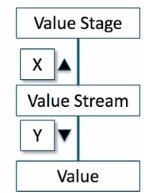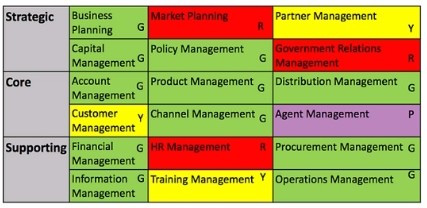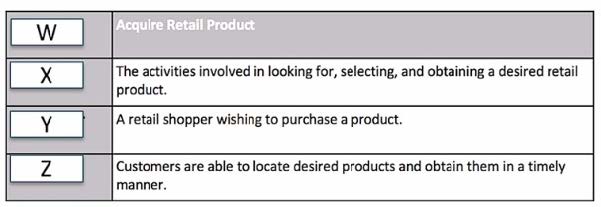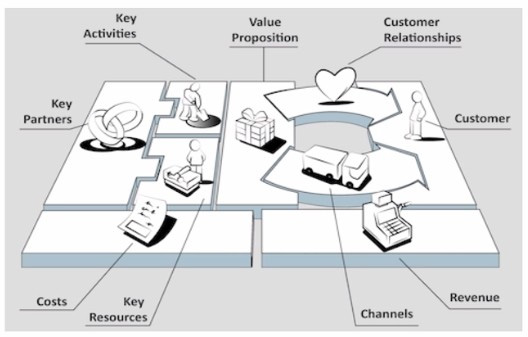OGB-001 Online Practice Questions and Answers
Which of the following describes how to define a business capability?
A. Identifying and articulating the business problem, enabling the business requirements to be fully documented.
B. Identifying human and computer actors. their roles, and their place in the business.
C. Identifying and documenting a set of statements that outline what the business architecture project must do.
D. Identifying and describing what needs to be done by the business in support of Its overall mission
Which Mop duringdevelopment of a business scenario ensures that eachiteration is managed as a mini-project?
A. Documenting Step
B. Reviewing Step
C. Gathering Step
D. Planning Step
Which of the following best describes a benefit of business models?
A. They can be used to resolve conflict amongst different stakeholders.
B. They can improve communication among business executives.
C. They can be used to calculate detailed cost estimates.
D. They have a consistent format that can be easily understood.
In ufliai ADM Phase floes the detailed assessment ot business capability gaps occur?
A. Preliminary Phase
B. Phase A
C. Phase C
D. Phase B
Consider the following extract of a model showing relationships between Business Architecture concepts:

What is the relationship labeled Y?
A. Consists of
B. Receives
C. Enables
D. Creates
What fundamental business architecture concepts should be considered when creating an Architecture Vision?
A. Business use-cases, event diagrams, class models
B. Business capabilities. organization maps, value streams
C. Business data model, business roles, business processes
D. Information exchange matrix, class models, node connectivity diagrams
Consider the following business capability model, where cells of a model are given different colors to represent levels (note the letters G, R, Y, P also denote the colors used = Green, Red, Yellow and Purple): Which of One following best describes the technique?

A. Capability Mapping
B. Heat Mining
C. Perspective Analysis
D. Gap Analysis
What Business Architecture concept is most related to an Information Map?
A. Value Stream Map
B. Heal Map
C. Organization Map
D. Business Capability Map
Consider the following definition ofthe elements of a value stream:

What is the element labeled 7?
A. Outcome
B. Viewpoint
C. Value
D. Concern
Consider the following representation of a business model:

Which of the following business models is This an example of?
A. The Business Model Canvas
B. The Four Box Framework
C. The Business Model Cube
D. The Business Model Innovation factory
Which of the following is an end product of business capability modeling?
A. A value stream stages catalog.
B. A business process model.
C. An organizational map.
D. A business capability map.
Which Input to Phase B is a document that may form the basis of a contractual agreement between the supplier and consume! of the architecture services?
A. Architecture Vision
B. Business principles, goals, and drivers
C. Statement of Architecture Work
D. Architecture Road map
Complete the sentence. An information map is a____________________________________.
A. target description of information assets needed to support the business
B. collection of Information concepts and their relationships to one another
C. description of the Business units that use capacities and participate in value streams
D. representation of where the business information is held within the enterprise
Whichof the following best describes a TOGAF Business Scenario?
A. A technique for constructing business models in a form enabling reasoning, insight, and clarity.
B. A method forensuring that the business processes deliver the required outcomes.
C. A complete description of a business problem in both business and architectural terms.
D. A specification of the conventions for a particular kindof business architecture view.
Which of the following best describes what a business model is?
A. The rationale for how an organization, creates, deliveries and captures value.
B. The description of the structure and interaction of applications that provide Key business functions.
C. The representation of business assets in use, or planned by the enterprise.
D. A maturity model tor IT process management, continuous improvement and best practices.
